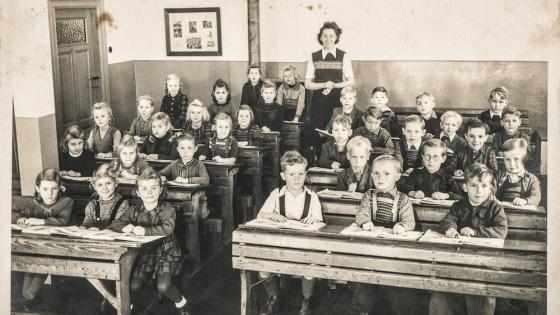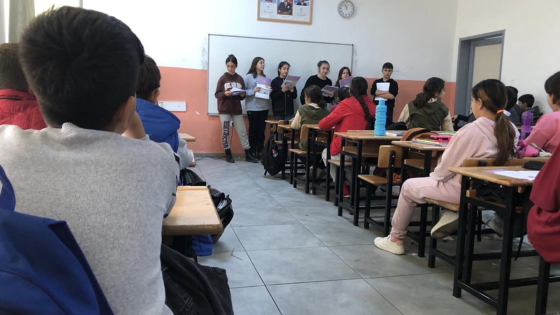Gender-based inequalities are a pervasive feature of all societies, today and in history. However, despite the persistence of such gaps in multiple dimensions, the gender gap in education has gone through a gradual closing – and even a reversal – in recent times (World Economic Forum 2012). This progress is one of the most puzzling stylised facts of modern economic growth and carries potentially huge implications, since human capital accumulation is a major determinant of women’s position in a broad set of socio-economic spheres, including work, family, and public life. The quest for causes and consequences of the education gender gap has therefore triggered a growing multi-disciplinary literature.
In a new paper (Bertocchi and Bozzano 2020), we selectively survey the literature with a focus on economics and an emphasis on a historical perspective. The survey starts as far back as 1850 and digs even earlier in search of the pre-conditions for gender gaps to emerge and eventually subside – at least up to a certain degree. Indeed, not all is well, and gaps do persist in specific, crucial dimensions.
Deep roots
The survey first focuses on the history of gender differentials and documents facts and trends in literacy, numeracy, and enrolment rates, with an eye to their determinants including pre-industrial conditions, religious denominations, and family and kinship patterns.
The key facts, roughly up to WWII, can be summarised as follows. For the most part of human history, women have been undereducated relative to men, within patriarchal societies where parents underinvested in the education of their daughters. Even when, in early modern Europe, male literacy began to expand, female education remained restricted as a privilege reserved only for the elites and often confined to specific ‘women’s subjects’.
During the past two centuries, with the rise of modern economic growth, male mass schooling became to spread, to reach girls by the 19th century. In Western countries, Protestantism played an important role in enhancing female education, unlike most other religious denominations. The steep rise in female formal education and the continuing decline in the education gender gap began by the second half of the 19th century, at least in Western Europe and the US, as modernisation and economic development proceeded.
Contemporary evidence
The post-WWII period paints a substantially improved yet variegated picture. Despite the fact that gender-based education gaps have tended to close in recent years, sharp differences still exist across levels of education and across countries.
A majority of countries have reached gender parity at the level of primary education, but disparities persist at higher levels. In OECD countries, the past decade has witnessed a reversal of the gap at the tertiary level, with the fraction of women attaining a degree surpassing that of men. In the past few years, female representation among individuals with a master’s and a doctoral degree has also been progressing fast.
Within developing regions, improvements at the primary education level have been particularly remarkable in Southern Asia but also significant in North Africa, sub-Saharan Africa, and Western Asia. Yet, in the face of generalised improvement, in severely disadvantaged populations access to education for girls remains problematic, as they remain the last to enrol and the first to drop out. Progress at the secondary and tertiary levels has been occurring at different speeds across developing regions.
As for other contemporary gender gaps such as those in political participation and economic opportunities, the consensus is that the gap in education is intimately linked to gender norms that originated from specific historical circumstances. Hence, the same drivers of the pre-war gender gaps may still be at play today. Through an intergenerational transmission process, these drivers persistently exert an influence even after the originating historical conditions and incentives have changed, and are channelled through the workings of labour markets, family formation dynamics, and cultural factors.
Not all is well, yet
Key unresolved issues remain for researchers and policymakers. In the developing world, large discrepancies still exist in access to schooling for girls and in basic literacy among adult women. Even in OECD countries where women have outpaced men in educational attainment, gender gaps in employment, entrepreneurship and politics persist. Furthermore, visible discriminatory gaps against women continue, in secondary and especially tertiary education, in the choice of the fields of study, with lifelong consequences for female occupational careers and earning profiles. In particular, at the college level, women are underrepresented in the STEM fields, which typically lead to higher employability and wages.
While the gender gaps in STEM fields have been widely acknowledged and researched, the presence of significant gaps in the field of economics has been less recognised until recently. Not only is the gender gap in economics large but in the US, for instance, they are even larger than in most STEM fields, and they appear to be even more resistant to change. It is not surprising that these dismal trends are reflected in the extremely low representation of women in the economics profession.
This acknowledgement is spurring a rapidly expanding literature that focuses on the causes, consequences, and possible solutions to the observed unbalance in the profession, with an eye to where they are formed – that is, in college or even before. The latest literature includes a new dedicated eBook from CEPR Press (Lundberg 2020a,b) and is collected in the WinE Bibliography on Research on Women in Economics assembled by the European Economic Association’s Women in Economics Committee (Bertocchi 2020).
To conclude, we refer to the review not only for a more detailed and systematic description of the education gender gap’s stylised facts but also for an attempt to identify its determinants, explore its implications, and point to some unresolved puzzles that call for further research.
References
Bertocchi, G (ed.) (2020), “Research on women in economics: The WinE bibliography”, European Economic Association, 3 August.
Bertocchi, G, and M Bozzano (2020), “Gender gaps in education”, in Klaus F Zimmermann (ed.), Handbook of Labor, Human Resources and Population Economics, Springer, 1-31.
Lundberg, S (ed.) (2020a), Women in Economics, CEPR Press.
Lundberg, S (2020b), “Women in the economics profession: A new eBook”, VoxEU.org, 5 March.
World Economic Forum (2012), The Global Gender Gap Report 2012.



